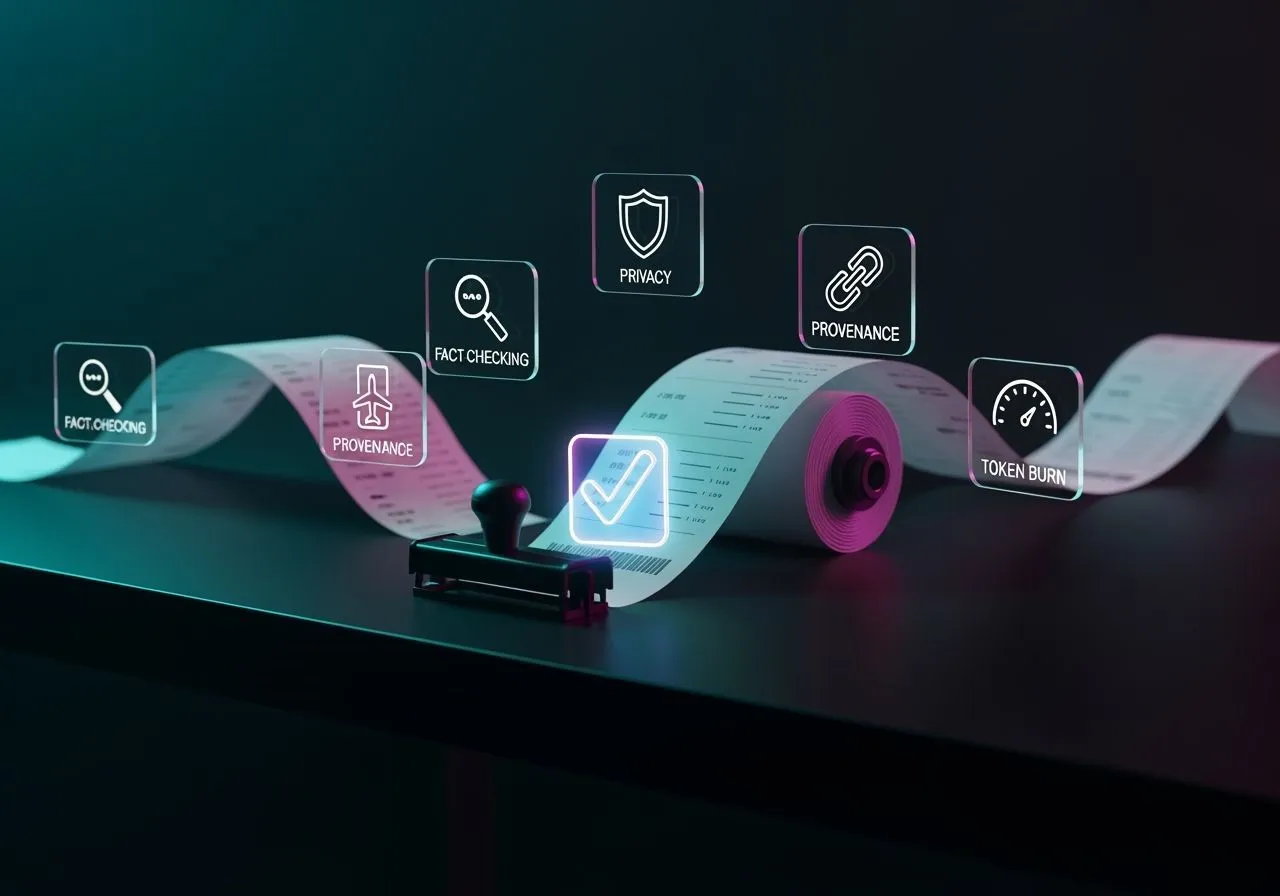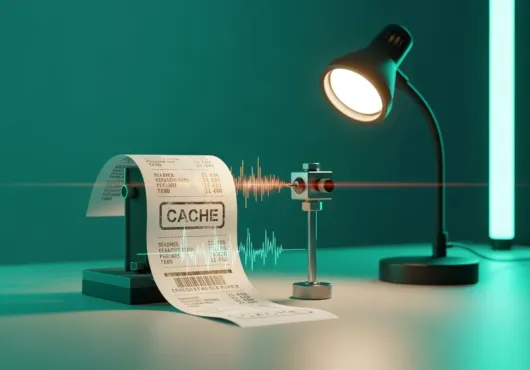If “free” still costs your time, reputation, or data, it isn’t free. Here’s how to spot the traps in 60 seconds—and the tiny stack that holds up when the marketing fog lifts.
Most “free AI tools” aren’t free. We stopped treating feature pages like evidence and started timing, throttling, and exporting. After a month of disappointments, the only things that consistently saved money weren’t shiny generators at all—they were tiny verifiers that prevent bad work from shipping.
Verification beats creation. The five keepers are checks—because they save hours and reputation before you spend credits.
Run the 60-second gauntlet. No account wall, clean export, no credit drain, privacy sane, falsifiable claims, and no fake-fast.
Trust receipts, not reviews. If a vendor can’t define how to prove them wrong in one session, you’ll pay the free-tier tax later.
“Free” has five non-negotiables
Most tools fail at least two:
Run right now — no account wall, no onboarding maze, no waitlist.
Export without scars — no watermarks, paste-jail, or ruined formatting.
No gotcha billing — credits are fine; meter-cheat and bait-and-switch aren’t.
Falsifiable claims — the vendor states what success looks like and how to check it.
Privacy sanity — your inputs aren’t quietly harvested into “improve our service.”
If a tool can’t clear those in one minute, it’s not free—it’s a sales demo.
The 60-Second Gauntlet (how we test “free”)
We don’t argue on vibes. We run these, in order:
Kill the foam: Paste the site’s promises into Slop Index. If the score reads like a pitch deck—hedges, passive, buzz bingo—assume the credits page will hurt later.
Image reality check: Run their hero images through Image Slop Index. If the UI shots are synthetic gloss or staged dashboards, expect “fake-fast” behavior in the app.
Language pressure test: Turn on Adblock for Feelings and reload their pricing/upgrade flows. If half the page disappears, “free” is psychological dark patterning.
Claim or it didn’t happen: Take one performance line (“instant”, “on-device”, “no hallucinations”) into Lore vs Receipt. If you can’t write a falsifier in two sentences, they can’t either.
Speed honesty: Point Fake-Fast Detector at the signup or first result. UI changes before the network finishes? That’s fake speed, not fast UX.
If a tool clears all five, you’ve got something. Most don’t.
The four common “free” scams (and how to catch them)
Watermarkware. You can export… with a brand tattoo.
Catch it: Paste a sample export into a blank doc. If you spend longer cleaning than creating, it’s not free.
Quota theater. “500 credits” that vanish doing “setup.”
Catch it: Run one action, then refresh the account page. If counters tick down on page loads, bounce.
Latency laundering. Skeleton screens that move, buttons that disable, “done!” banners before it’s done.
Catch it: Cold-start + throttle once. If the UI claims success before the network, mark as fake-fast.
Consent laundering. “Improve experience” flips analytics, training, and remarketing.
Catch it: With Adblock for Feelings on, re-check toggles. If “off” still pings third parties, that’s not consent.
What actually belongs in a free stack
Hot take: the only free tools that consistently save money are the ones that prevent bad work from shipping. Creation tools come and go; verification compounds.
1) Slop Index — strip the weasel out of words
The fastest way to improve copy is to remove dishonesty. Slop Index doesn’t chase tone; it surfaces hedges, passive voice, and weasel phrases you can delete in one pass. Your message gets shorter and more defensible—immediately.
Why it wins: Numbers over vibes, receipts over adjectives. If your promise can’t survive the edits, the feature—not the wording—is wrong.
2) Image Slop Index — stop synthetic sheen from burning trust
Fake UI screens and AI stock look “premium” until they collide with reality. ISI flags the tropes (impossible light, plastic skin, magical dashboards) and nudges you toward real artifacts: screenshots, benchmarks, photos with context.
Why it wins: It protects conversion and credibility. Pretty isn’t proof.
3) Adblock for Feelings — read pages without the push
Urgency fluff and shame language distort decisions. This filter neutralizes coercive CTAs and dark patterns so you can evaluate the offer like an adult.
Why it wins: You make clearer choices, faster. Also useful for QA: if a pricing page dissolves when the filter is on, the copy was doing the selling—not the value.
4) Lore vs Receipt — build your “BS reflex”
A 30-second game that trains you to smell claims that won’t survive a stopwatch. Each round includes a falsifier and a method you can adapt for your own features.
Why it wins: You don’t learn skepticism by browsing; you learn it by being wrong and seeing why. Streaks show progress.
5) Fake-Fast Detector — catch performance theater
Measures user-visible latency, not Lighthouse glitter. It spots skeleton screens that mask delays and “done” states that aren’t done.
Why it wins: You ship honest speed. That reduces churn more than one more hero graphic ever will.
Put bluntly: these five tools cost $0 and prevent expensive mistakes. They’re free in the only way that matters—your calendar and credibility stay intact.
OK, but what about “make me something” tools?
Creation-side freebies churn constantly. If you must dabble, run the gauntlet first. A few rules of thumb:
Prefer local or export-clean tools over cloud watermarkers. If you can’t show the work to a paying customer tomorrow, it isn’t free; it’s trialware.
Reward falsifiers. Any product page that defines how to prove them wrong deserves more of your time.
Trust receipts, not reviews. A five-star badge doesn’t survive a throttle test.
A one-minute checklist you can paste into any trial
Time to first usable output: ≤60s (no account, no tutorial wall)
Export: unwatermarked, clean Markdown/PNG/CSV
Credits: no silent drains during setup/previews
Privacy: no training/ads tied to your input by default
Claims: has falsifier you can try in one session
Speed: no fake-fast (UI≠done until network is done)
If a tool fails any line, it’s not “best” and it’s definitely not “free.”
The boring conclusion (that actually makes money)
The internet doesn’t need another mega-list. If you adopt one principle—verify before you invest—you’ll spend less, ship better, and dodge the free-tier tax most teams quietly bleed.
Start with the five that make everything else safer:
Slop Index · Image Slop Index · Adblock for Feelings · Lore vs Receipt · Fake-Fast Detector.
When a creator tool also clears the gauntlet, great—add it. If not, you just saved a sprint.



